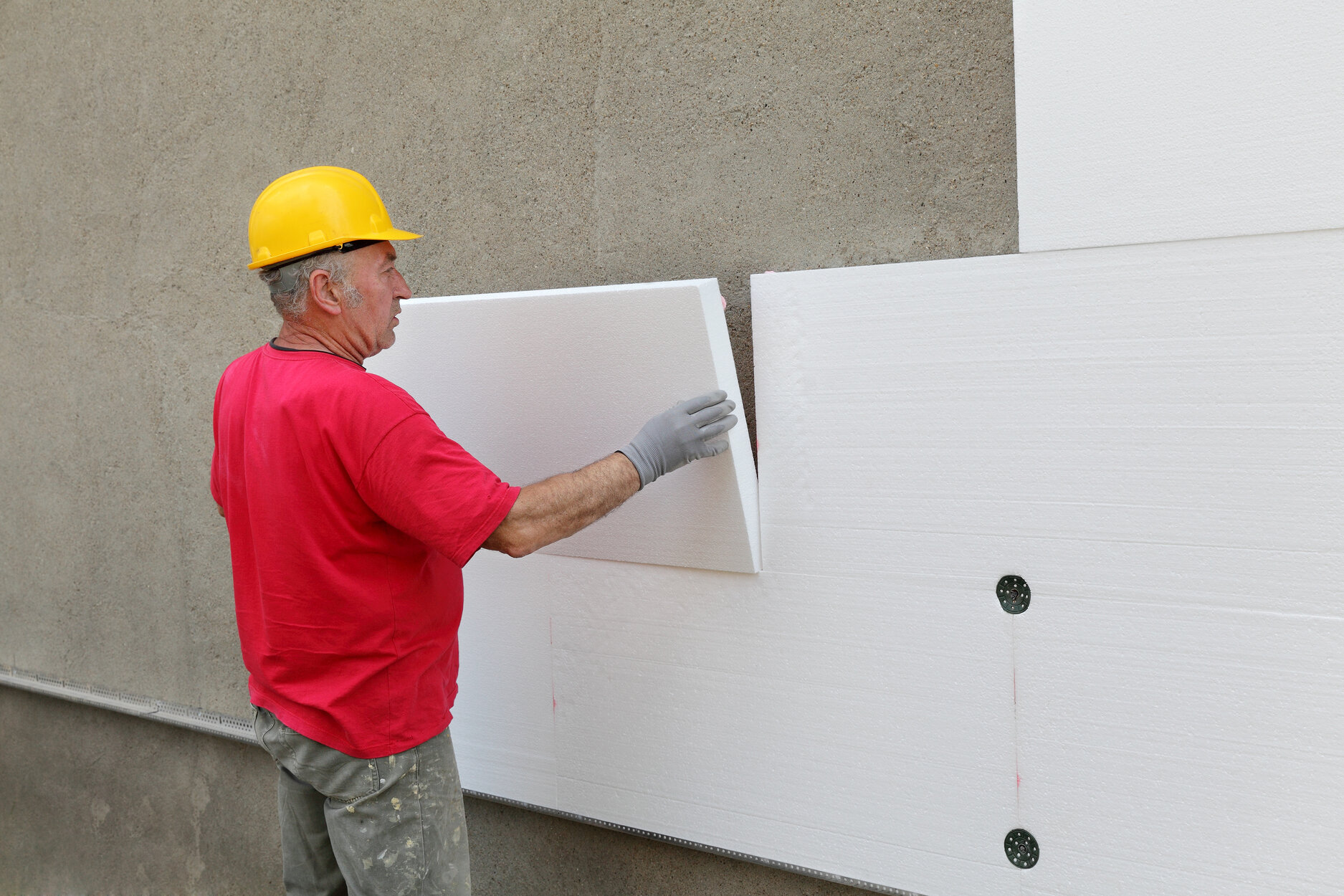Internal vs. Solid Wall insulation – which is right for my property? Leave a comment
Internal vs. Solid Wall insulation – which is right for my property?
Are you thinking about insulating your solid walls, but unsure whether internal or external insulation would be more suitable? We’ll be looking at some of the advantages and problems associated with each way of insulating a solid wall.
Firstly, do you have a property with solid walls? If your property was built before the 1920s it’s likely to have solid walls. You can tell by looking at the brickwork, a property with cavity walls will have bricks laid out in an even pattern and are all laid lengthways. Solid walls on the other hand will have alternating patterns, as some bricks will be paid across the wall so you can see the smaller ends from the outside.
External Wall Insulation:
External wall insulation involves fixing a layer of insulation to the wall and then covering it with a render or cladding.
Some of the main advantages include:
Improving the appearance of outer walls (can also cover any gaps or cracks on the wall which can also reduce draughts)
Provides noise insulation
Reduces internal or interstitial condensation and damp
Airtightness can be better preserved
Easier to manage thermal bridges such as exposed concrete frame or window sill
Preserves the value of the thermal mass* of the walls in regulating temperature inside.
*Thermal mass is the ability of a material to absorb and store heat energy
Disadvantages:
You may need planning permission, if the building is listed or is in a conservation area you should consult your local planning authority.
Downpipes and other projections, or service entry points, must be dealt with
Damp-proof course and window trickle vents must not be covered
It is usually more expensive than internal wall insulation (£8,000 to £13,000), especially if scaffolding is factored in (unless you coordinate this with other external work).
Unlike internal wall insulation, it will not reduce the floor area of your home and can be installed without disruption to the occupants.
Internal Wall Insulation
Internal wall insulation is done by fitting insulation boards to the wall, or by building a stud wall filled in with insulation material such as mineral wool fibre.
Advantages:
Does not change the external appearance of the building
Insulation can be installed on a room-by-room basis
Cheaper than external insulation (£4,000 -£6,000 for 2-3 walls, excluding kitchens & bathrooms).
Disadvantages:
Loss of room space
Disruptive to residents, especially in bathrooms and kitchens which have units and appliances fitted against walls.
Character features such as skirting boards, door frames, coving, panelling and picture rails can cause problems.
It’s necessary to move electrical sockets and light switches
Some other important things to consider include:
Air-tightness:
An air-tight property will have no unintended gaps, cracks or tears where air can move in and out of the space of the building and thus avoids heat loss. To achieve air-tightness of the building you must ensure that the vapour control membranes are well sealed. It is important for unventilated air in gaps behind plasterboard and insulation (including services voids) not to mix with external air or with cold ventilated areas such as that in loft spaces. These leaks could lead to the air behind the plasterboard becoming very cold, resulting in heat loss.
Breathability
Breathability refers to how the building materials are able to transmit moisture and breathable materials allow moisture to pass through walls without it becoming trapped. A lack of breathability can result in interstitial condensation which can cause the deterioration of the building fabric and the development of mould. Natural materials, including wood fibreboard, mineral wool batts and rolls, are better able to ‘breathe’, whereas polyurethane, polystyrene and phenolic foam boards do not ‘breathe’.
Intelligent Membranes
Intelligent membranes are airtight membranes with variable vapour resistance. They can resist vapour entering into structural elements to fight interstitial condensation and are recommended for both external and internal wall insulation. They consist of a sheet with various layers that allow or obstruct moisture-laid air from passing through it depending on the relative humidity and temperatures on either side. For example, if a room has high temperature and humidity and it is cold on the outside it would prevent the moisture from travelling outwards and risk condensing on cold surfaces. Alternatively, when it is cooler on the inside and there is less humidity, moisture can gradually return to help dry out the interstitial space.
Thermal Bridging:
Thermal bridging will occur whenever there is a break in the continuity of the insulation e.g at the junctions of solid external walls with internal walls. Thermal bridging results in a loss of heat and the risk of condensation and mould growth. This can often be addressed with thinner and/or higher-performing insulation.
If you’re interested in getting solid wall insulation and need some [advice from a retrofit coordinator, please contact Oxfordshire cosy homes on:……
References:
https://www.spab.org.uk/advice/breathability-and-old-buildings
https://ewipro.com/2019/01/15/why-choose-a-breathable-external-wall-insulation-system/
////
Using service voids can improve air-tightness and the future integrity of the insulation because they permit new sockets and wiring to be installed without having to penetrate insulation or vapour control layers.
Improving air-tightness is not only good for avoiding heat loss, but also improves building durability by preventing damage caused by moisture-laden cold air leaking and condensing in the building envelope.
https://passivehouseplus.ie/magazine/guides/the-ph-guide-to-airtightness
————————————————————–
Caitlin Latimer is Project Manager for the National Energy Foundation’s Better Housing Better Health project. Better Housing Better Health helps keep residents warm and well at home and improves the energy efficiency of their homes. In a preventative approach to health and wellbeing, the service provides residents with a single point of contact to get impartial expert advice to help improve the energy efficiency of their home, save money and improve comfort. The BHBH service covers Buckinghamshire, Oxfordshire, Hertfordshire & Bedfordshire. Visit www.bhbh.org.uk for more information.
